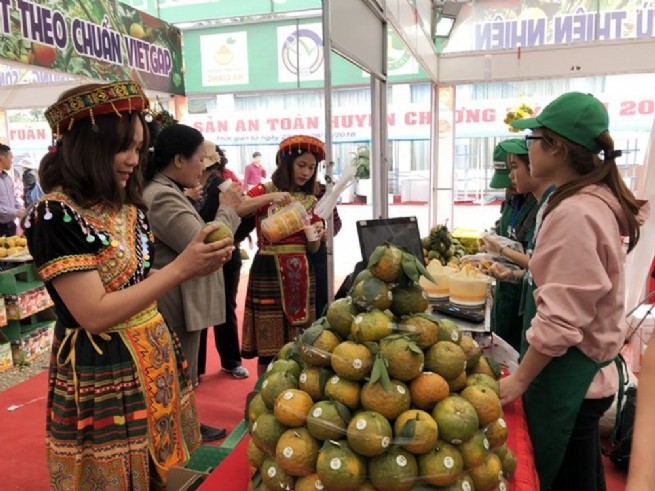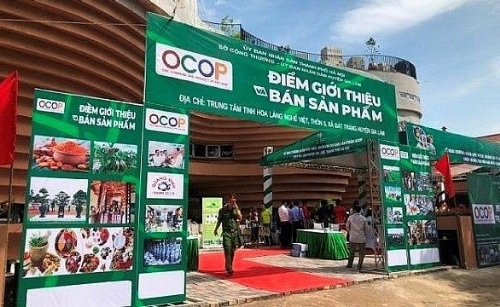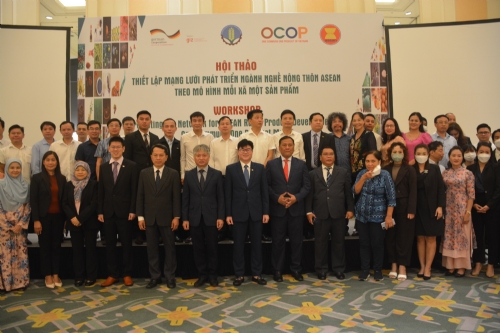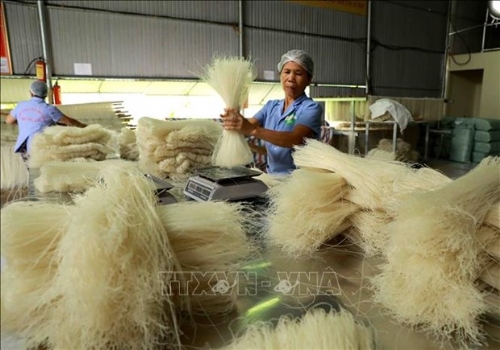Promoting Locally Advantageous Products
Tuesday, November 19, 2019 15:39

Even in the northern mountainous region, considered to be the poorest in the country, by the end of June 2019, 10 out of 14 provinces approved the One Commune One Product (OCOP) Program, registering 557 products till 2020. In Bac Kan province alone, 136 units have registered OCOP for 173 products. The province is also the first to establish the OCOP Association with 93 members.
Why do these localities have this breakthrough? Let’s look at OCOP products of northern mountainous provinces. They are all organic agricultural products: Lychee of Bac Giang, plums and sturgeon of Son La, grapefruit of Phu Tho, tea of Thai Nguyen and sugar apple of Lang Son. They are also products made by ethnic minorities: Seng Cu rice, upland sticky rice, vermicelli, taro, seedless persimmons, yeast-leavened wine and smoked meat. These advantages enable localities to register OCOP products, which are almost unique and indigenous to certain places. Another “support”, possibly an advantage, of ethnic minorities and mountainous areas, is government policy on priorities for them like social security and poverty reduction. If these localities can effectively utilize these advantages, the OCOP Program can be totally realized.
In addition, with thousands of typical agricultural products, more than 100,000 hectares of citrus trees, accounting for nearly 50% of the country's citrus fruit area positively contributes to agricultural growth and new countryside construction; and improves material and spiritual life for farmers. Carrying out the OCOP Program, Hoa Binh province has recognized eight 4-star products and sixteen 3-star products, joining with more than 400 locally typical OCOP products of northern provinces to be delivered to domestic and foreign consumers.
According to a report, Hoa Binh province currently has over 10,000 hectares of citrus fruit, of which early ripened fruits account for 25% with CS1 orange, On Chau tangerine, BH orange/ Marrs orange; the in season fruits account for 45% by Doai orange, Van Du orange, tangerine, red grapefruit and green grapefruit; and late-ripened fruits account for 30% with Duong Canh orange and V2 orange. Over 10% of citrus area was certified to meet VietGAP standards. The product value per hectare of citrus fruits is VND450-500 million. This is the main factor to increase the product value per hectare of cultivated land to VND135 million and raise the sector value by 6.2% in 2019.
In Ha Giang province, honey (mint honey, cardamom honey and wild honey) is famous for its good quality and utility. Peppermint honey is extracted by bees from mint flowers - a wild plant that grows in the high mountains of Meo Vac, Dong Van, Yen Minh and Quan Ba districts of Ha Giang province. Because of its wild growth, the annual yield of mint nectar is small. The honey is typically delicious and coolly sweet. Therefore, mint honey is the most expensive among all types of honey.
Most of Ha Giang products and services have huge potential for development, diversification and commercialization, including Nang Don rice wine, Thanh Van corn wine, Shan snow tea, medicinal herbs, Mau plum, black-bone chicken, seedless persimmon, honey, dried beef and black pig. Especially, the province is famous for experience tourism, sightseeing, terraced field exploration and traditional village tours. According to a report by Ha Giang Provincial People’s Committee, in 2018, 27 entities registered 37 products, including eight ideas and 29 physical products. Among 29 ranked products, 13 products are rated 4-star, two products got 3-star and 14 products given 2-star.
The launch of the OCOP Program will help people improve their income, reduce poverty sustainably, and complete the “Economy and producer” criteria in the new countryside development. At the same time, the program will help replace backward production practices, direct people to market economy to create new approaches to production and trading of traditional products in rural areas. This factor will foster the sustainable development of rural economy and reduce migrations to urban areas.

 THE PROGRAM COOPERATED WITH CENTRAL COORDINATION FOR NEW-STYLE RURAL DEVELOPMENT
THE PROGRAM COOPERATED WITH CENTRAL COORDINATION FOR NEW-STYLE RURAL DEVELOPMENT
Other news
- HANOI: Promoting the consumption of craft village products and developing community tourism(11/5/2022 3:16:04 PM)
- Chuong My: Effectiveness from the One Commune One Product Program(11/3/2022 10:04:10 AM)
- Thanh Hoa develops OCOP products(11/1/2022 1:30:31 PM)
- Promoting the network for Asia Rural Product Development on one commune one product(8/30/2022 9:43:23 AM)
- Phu Tho eyes 56 new 3-star OCOP products for 2022(8/23/2022 3:09:56 PM)
- Opening of the OCOP product introduction week in Hanoi in 2022 in Phuc Tho district(8/1/2022 3:28:38 PM)
- Evaluation and classification of OCOP products Hoan Kiem District in 2022(7/27/2022 10:10:23 AM)
- Hanoi turns to green, sustainable agricultural sector(6/28/2022 4:10:22 PM)
- OCOP Forum in the Mekong Delta - Dong Thap 2022: Opening up great opportunities for regional products.(5/4/2022 2:38:13 PM)
- Over 1,000 spice products on display in Ho Chi Minh City(4/29/2022 2:34:02 PM)
The featured news
-
HANOI: Promoting the consumption of craft village products and developing community tourism
-
Promoting the network for Asia Rural Product Development on one commune one product
-
Phu Tho eyes 56 new 3-star OCOP products for 2022
-
Opening of the OCOP product introduction week in Hanoi in 2022 in Phuc Tho district
-
Evaluation and classification of OCOP products Hoan Kiem District in 2022






